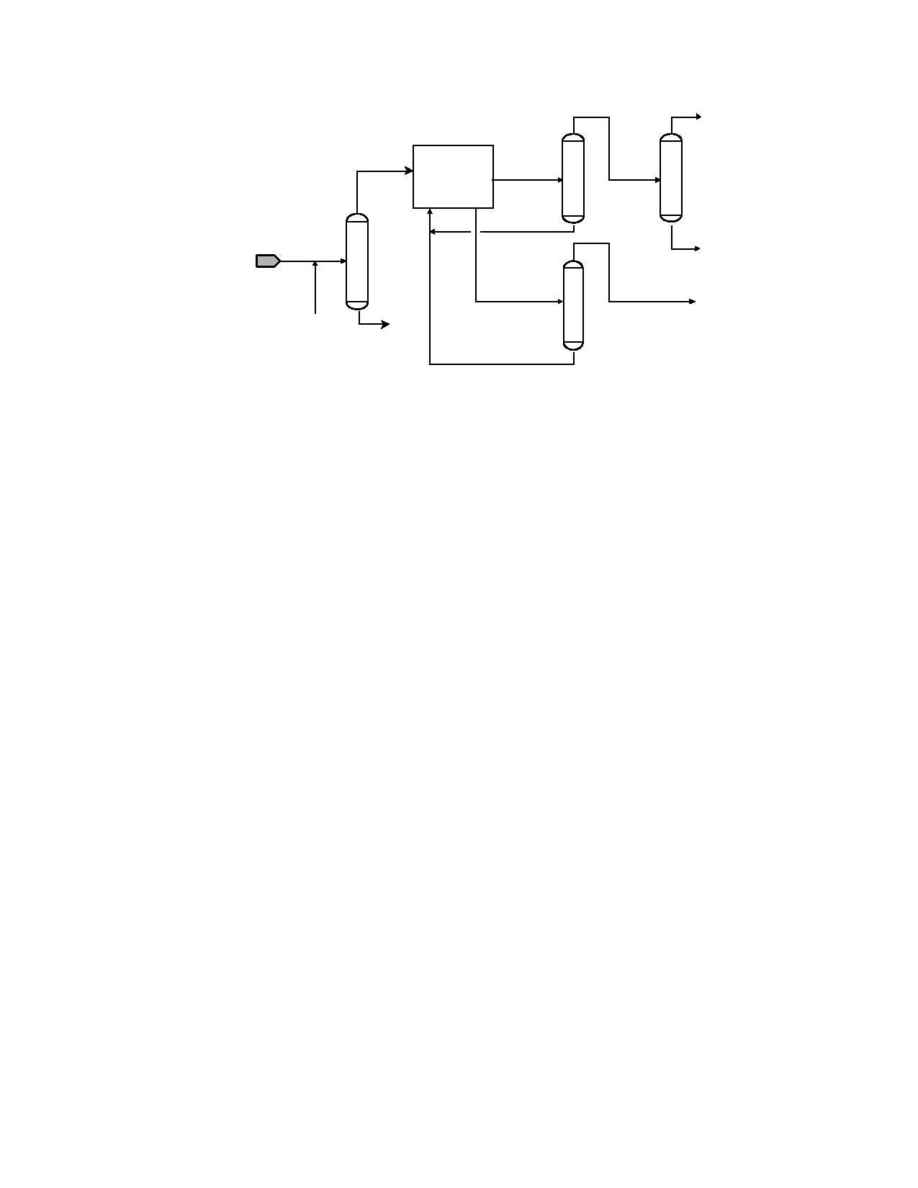
Extract Column
Finishing Column
Xylene
Column
Paraxylene
C
9+
Fresh
Mixed Xylenes
Raffinate Column
Light
aromatics
Adsorption
Chambers
Extract
To Xylene
Isomerization
Raffinate
Desorbent
Recycle from
Xylene Isom.
Figure 3. Adsorption process for paraxylene recovery
The para-depleted xylenes are routed to an isomerization unit, which re-establishes
thermodynamic equilibrium among the isomers. After this, the xylenes flow back to the
original C
8
/C
9
fractionator until they are recycled to extinction. There are advantages and
disadvantages of a system based on this design configuration.
Technology Review of Adsorption-Based Paraxylene Complex
Advantages
·
High per pass recovery of paraxylene, leading to lower recycles
·
Relative efficiency in concentrating the paraxylene
Disadvantages
·
High capital cost
·
Sensitive to C
9+
hydrocarbons in the feed
·
High deployment of expensive proprietary equipment and materials; long
lead time for procurement
·
Molecular sieve is fragile, expensive, easily poisoned
·
Relative inefficiency in purifying the final paraxylene product
For an adsorption-based unit producing 400,000 MTA paraxylene with xylenes feedstock,
the relevant performance parameters are listed in the table below:
Performance Parameters, Adsorption-Based System
CCOP, $/ton
$370
Investment
1
$170 MM
Xylenes feedstock required
475,000 MTA
Aromatic by-products
2
45,000 MTA
Other by-products
2
30,000 MTA
1
2000 USGC ISBL
2
No toluene or C
9
conversion unit; EB-dealkylation type of isom catalyst
